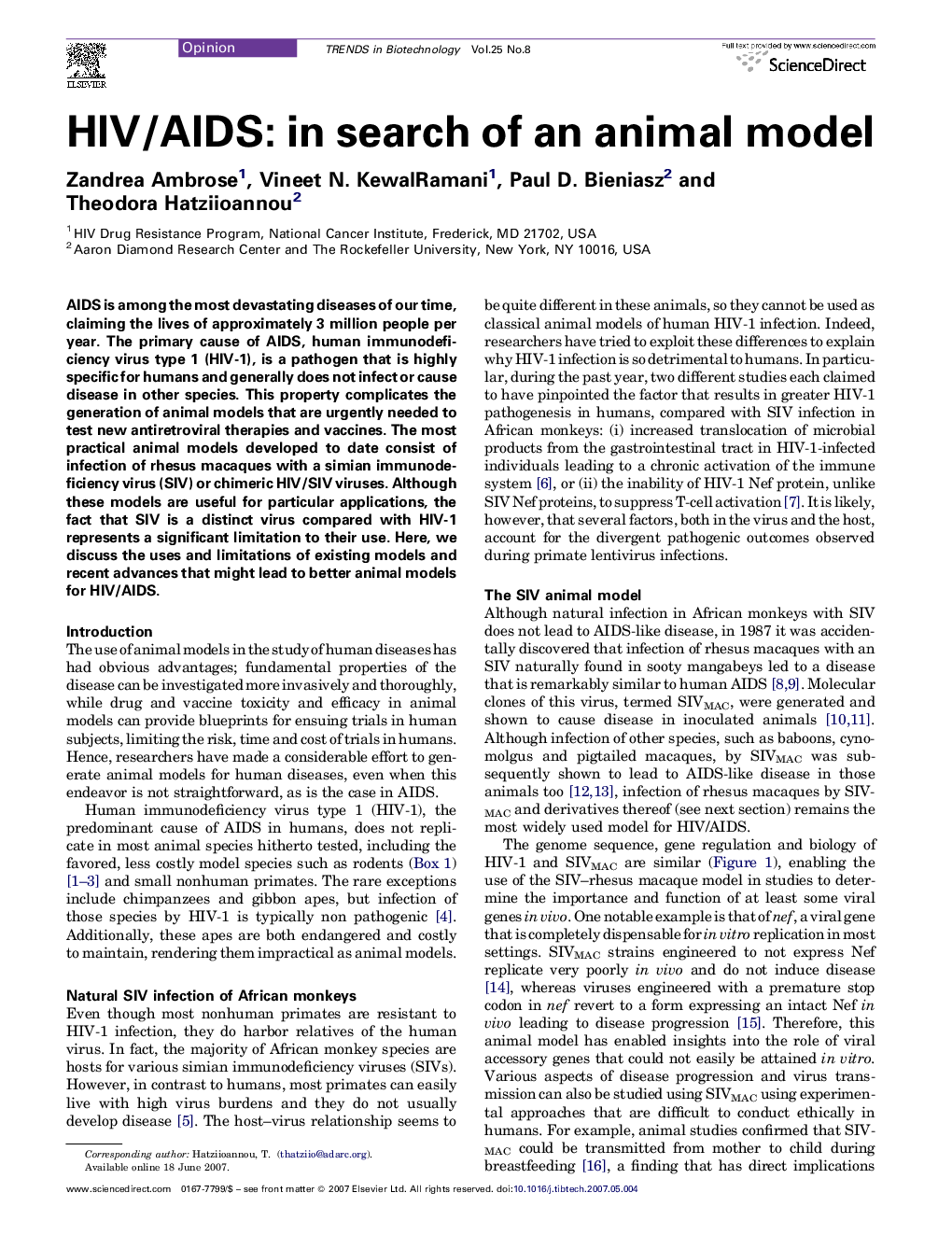| کد مقاله | کد نشریه | سال انتشار | مقاله انگلیسی | نسخه تمام متن |
|---|---|---|---|---|
| 37391 | 45349 | 2007 | 5 صفحه PDF | دانلود رایگان |

AIDS is among the most devastating diseases of our time, claiming the lives of approximately 3 million people per year. The primary cause of AIDS, human immunodeficiency virus type 1 (HIV-1), is a pathogen that is highly specific for humans and generally does not infect or cause disease in other species. This property complicates the generation of animal models that are urgently needed to test new antiretroviral therapies and vaccines. The most practical animal models developed to date consist of infection of rhesus macaques with a simian immunodeficiency virus (SIV) or chimeric HIV/SIV viruses. Although these models are useful for particular applications, the fact that SIV is a distinct virus compared with HIV-1 represents a significant limitation to their use. Here, we discuss the uses and limitations of existing models and recent advances that might lead to better animal models for HIV/AIDS.
Journal: - Volume 25, Issue 8, August 2007, Pages 333–337